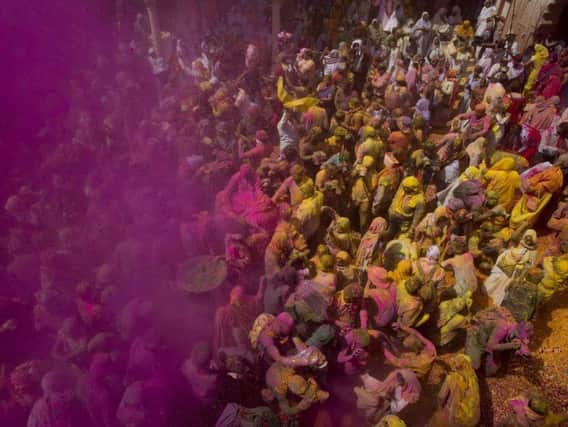What is Holi, the Hindu festival of colour?


The traditional festival is held to celebrate the beginning of spring, and of the championing of good over evil.
Coloured power is thrown in giant celebrations, leaving wonderful rainbow explosions on people, buildings and streets.
Advertisement
Hide AdAdvertisement
Hide AdThe festival is the inspiration for the Color Run and Obstacle Color Rush events which have taken the North East and the rest of the UK by storm, seeing competitors pelted with coloured powders as they take part in fun runs and obstacle courses.
Holi is also depicted in the music video for Coldplay's Hymn for the Weekend in 2016.
Although the festival originated in India, it has been adopted in many places around the world. Celebrations formally began on the evening of March 12 and end tonight, March 13 - and the festival is marked by today's Google Doodle.
The legends and customs:
Bonfire
Holi celebrations come from various Hindu legends. One is the story of how the god Vishnu saved his follower Prahlada from a pyre on which his evil aunt Holika burned.
Advertisement
Hide AdAdvertisement
Hide AdTo mark this, the night before the Holi, a Holika bonfire is burned to celebrate the victory of good over evil.
Preparations begin days before the festival people start gathering wood for for the bonfire in parks, community centers, near temples and other open spaces.
An effigy to signify Holika, who tricked Prahalad into the fire, is placed on the top - much like our guy on Bonfire Night.
Coloured powder
The coloured powder - known as gulal - comes from the legend of Krishna, whose skin was dark blue. He was worried he wouldn't be accepted by Radha, with whom he was in love, so he coloured her face to make her like himself.
Advertisement
Hide AdAdvertisement
Hide AdThe colourful powder is perfumed, and scattered on everyone in the giant rainbow celebration, which remembers Krishna's love, and signifies the coming of spring and the season's many colours.
Traditionally the powder was made of turmeric, paste and flower extracts, but in modern times this has been widley replaced with synthetic versions.
Each colour used has a different meaning: red is for love and fertility, blue is the colour of Krishna, yellow is the colour of turmeric, and green symbolises spring and new beginnings.
As part of the preparations for Holi, Hindu families stock up on pigments, food, party drinks and festive foods.